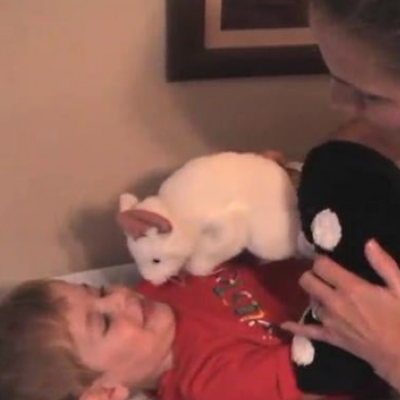The Dos of Discipline: Twelve Rules for Getting Great Results With Your Kids!

Parenting is a tough and frustrating job. More than anything we want to help our kids grow into healthy, happy adults. Yet when they don’t behave the way we want them to, it’s all too easy to resort to tactics we’re not proud of. Yelling. Threatening. Spanking. We use these discipline techniques even though we feel bad afterward (and, obviously, so do our kids). And we stay stuck in our cycle of negativity because, quite frankly, we don’t know any good alternatives.
There are positive, effective discipline techniques out there—techniques that result in happy, well-rounded, well-behaved children. And best of all, they allow us to avoid the fighting, stress, and general feel-bad techniques we’ve resorted to in the past. There are better ways of teaching children to be cooperative. Fear and aggression are not effective, and they don’t feel good to anyone. The true meaning of the word discipline is ‘to guide’. And guidance means teaching. When we punish our children, we often leave out the guidance, which means we don’t often get the results we are looking for.
The alternative is to employ a technique known as emotion coaching. It’s a gentle, open-hearted alternative to old-fashioned, often aggressive discipline that can be used with babies, toddlers, preschoolers, and young school-aged children. Ultimately, emotion coaching gives parents the know-how and the confidence to build strong, productive relationships with their children.
There are a few simple, feel-good strategies parents can employ to make their disciplining more effective. Read on for twelve tips you can use starting when your child is an infant.
-Set limits and expectations all along the way. Parents often make the mistake of thinking that discipline starts once children are older—not babies. But it’s a good idea to begin providing guidance and setting limits as early as infancy. This sets your child up for success—if she knows what the boundaries and expectations are from the beginning, then when she’s two you won’t be trying to undo all her bad habits or behaviors.
-Don’t let your own issues affect your discipline. If you’ve had a bad day at work or are just plain exhausted, it can be much easier to operate on a short fuse and let even the tiniest things push you over the edge. Before you interact with or try to redirect your child, make sure that you aren’t letting your own personal anger or problems affect the way you react toward your child.
-When your blood starts to boil, take a grown-up time-out. Take a grown-up “cool-off” time when you find yourself too angry to deal with your child. Once you feel calm and collected, return to your child to address the situation at hand.
-Keep communicating. The earlier you establish a healthy line of communication with your child, the more effective you will be in communicating discipline or behavioral changes to him. No matter what age your child may be, it’s important to keep communicating your thoughts and feelings with him.
-Discuss your feelings about what you see. When our kids misbehave, we often neglect to tell them how their actions make us feel. But by explaining to your child that it makes mommy sad when she sees her children fighting or not sharing with one another, we help them to begin to understand the effect their behavior has on others, which in turn makes them more likely to react differently the next time.
-Let children know that parents DO understand. Acknowledge and validate your child’s feelings while setting limits. Let her know that you aren’t just handing down a punishment and you do realize that she is experiencing emotions, too. When she knows that she is being heard and understood, she is more likely to listen to what you have to say as well.
-Give the child a good behavior to use in place of the bad one. Children can’t learn how we want them to behave unless we replace their bad behavior with the one we want to see or expect. When your child misbehaves, be sure to follow up your “We don’t run inside” with a helpful suggestion for what he can do—like “But we can run and jump and play all we want to outside. Would you like for me to go out and play with you?”
-Redirect your child’s attention. If your little one is throwing a tantrum in the grocery store or having a meltdown over the toy her little brother just stole, then redirect her attention to another activity or train of thought. Have her help you on a “scavenger hunt” to complete your shopping list, or sit down with her in another room to play a game or read a book. Pulling her away from the situation at hand will help you both to calm down and move forward.
-Do what you say you’re going to do every single time. Being a parent takes a lot of patience and sacrifice. And that means following through on discipline even when it’s inconvenient or unpopular. If the consequences you employ as discipline are merely empty threats, your child will know as much and the behavior will never change. If the consequence of continued bad behavior is leaving the fun birthday party, don’t just threaten it—leave the birthday party. It might feel awkward and be inconvenient, but the payoff will be a child who knows you mean business.
-Make encouragement one of your top tools. Discipline doesn’t have to be only about the “don’t do thats” or the “because I said sos” (and it shouldn’t be!). Children love nothing more than to please their parents, and your encouragement is worth its weight in gold. Make sure you offer encouragement when your child follows through on a good behavior. If he knows you can be pleased, he will work hard to make it happen time and again!
-Take some time to talk it out. If your child is over three years old, have her sit with you and think about her actions; then ask her what she can do differently next time. Taking a “thinking time” or “cool-down time” helps her to become an active part of her discipline, so that it feels less like a commandment being handed down and more like a decision and effort she is a part of.
-Brainstorm ideas for better behavior. While it may seem obvious to us how our kids should behave, it’s not always so black and white for the kids themselves. We as parents need to be vigilant about offering solutions and brainstorming ideas with our children—because there will be times when they may not know what to do and will need our guidance. Write down a list of behaviors that are a problem and brainstorm together how they can react differently, so they have solutions to choose from the next time those situations occur.
Children learn good behavior by imitating good behavior. So at the end of the day, the most effective thing a parent can do to ensure that their children learn morals, values, and compassion is to make sure that they see those things in you—especially when it comes to your interactions with them.
Like anything else in parenthood, positive discipline takes a lot of patience, and practice makes perfect. But the reward in the end is worth it. When you start seeing—and feeling—the results, you’ll be glad you took the high road.
For more great parenting tips, check out Kimberley’s book, www.TheGoToMomsGuide.com.



